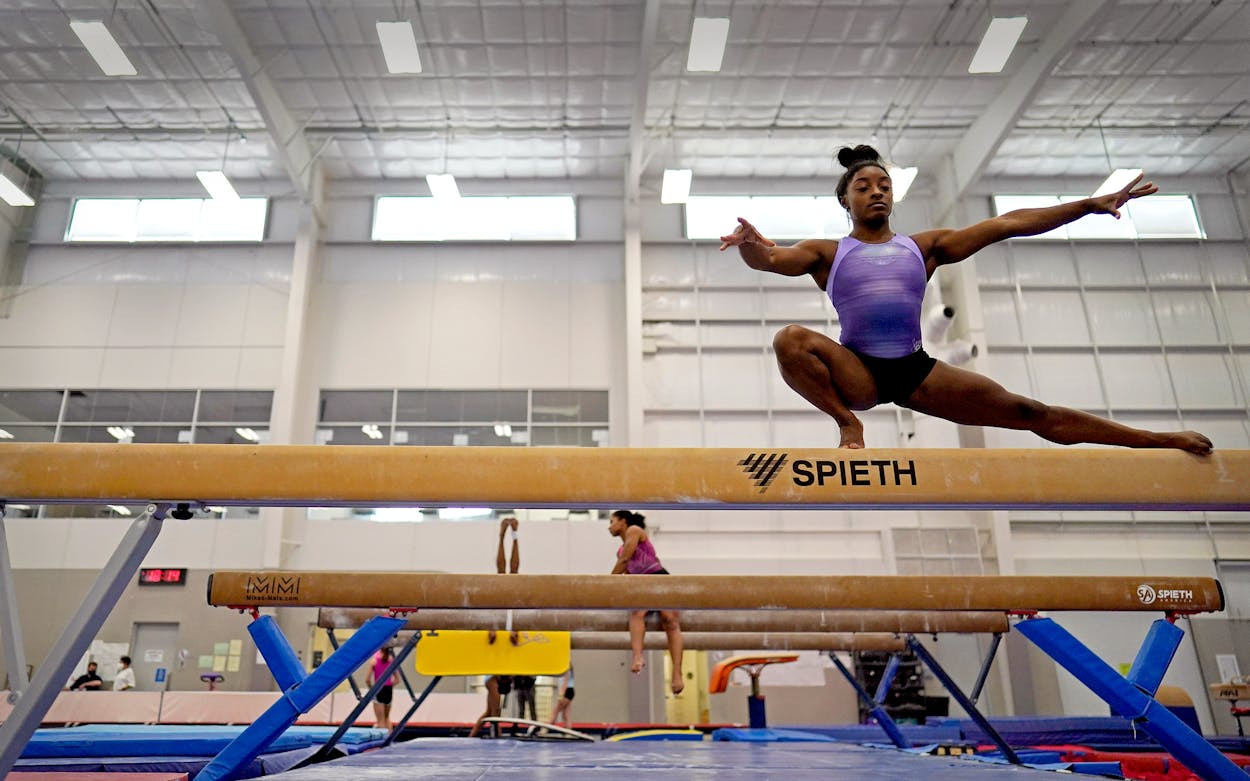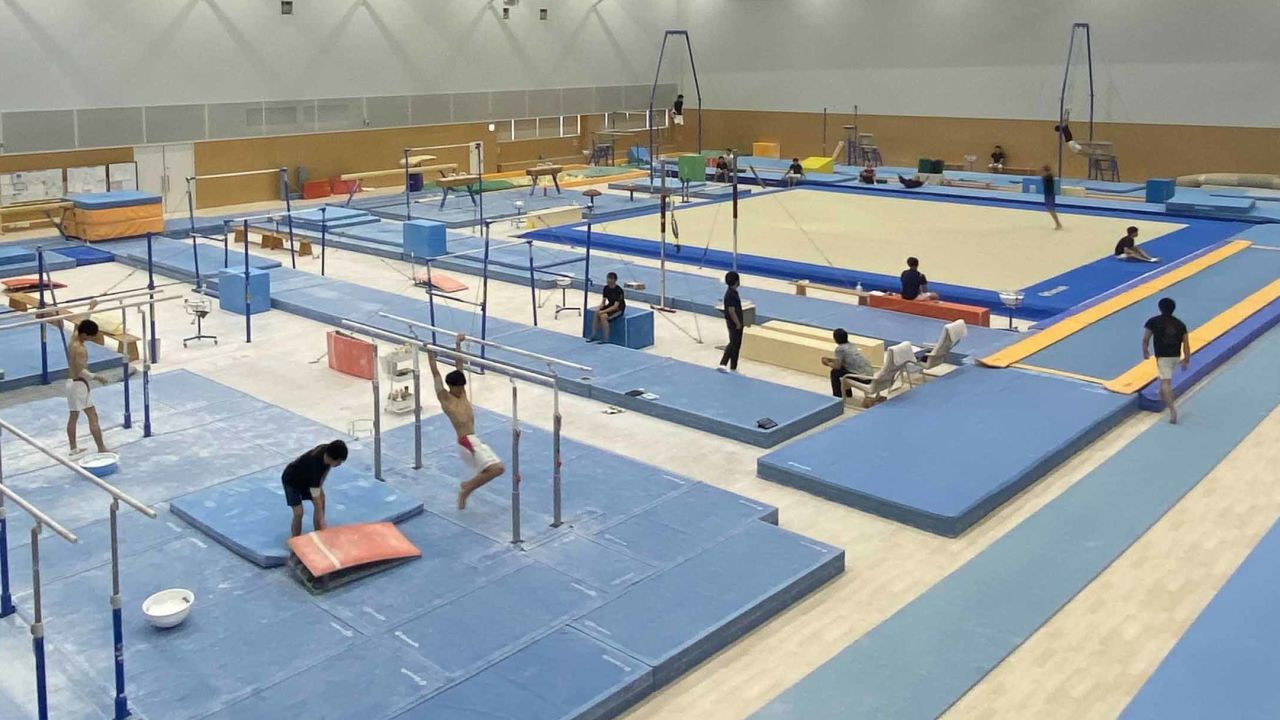Simone Biles’ Real Training Ground Isn’t a Gym — It’s Her Fear.
 When you think of an Olympic-champion like Simone Biles, you likely imagine her in a high-end gymnastics facility, lights blazing, cameras rolling. But beneath the spotlight lies a different story — one of a “garage lab”, deliberate failure, and quiet preparation away from public view.
When you think of an Olympic-champion like Simone Biles, you likely imagine her in a high-end gymnastics facility, lights blazing, cameras rolling. But beneath the spotlight lies a different story — one of a “garage lab”, deliberate failure, and quiet preparation away from public view.
In a modest space somewhere in Texas, Simone has created what she refers to as “the lab”. Not a showroom gym. Not the grand stages of championship arenas. Instead: a discreet training zone where she experiments, risks, fails, and re-builds. The lack of cameras there is no accident: this is where she trains her mind as much as her body.
The Unseen Space
Located away from media glare and social-media pressure, the lab offers solitude. It is stripped down — gym mats, bars, beams, perhaps a single overhead spotlight cutting through dusk-lit windows. No red carpet launch. No YouTube highlight reel. It’s raw. It’s real.
 Here Simone practices the moves she won’t immediately post online. The ones she might fall on. The ones that are dangerous or unstable. Because in her philosophy: perfection is not the first goal — adaptation is.
Here Simone practices the moves she won’t immediately post online. The ones she might fall on. The ones that are dangerous or unstable. Because in her philosophy: perfection is not the first goal — adaptation is.
Practicing Failure On-Purpose
Most athletes train the skill they can land. Simone trains the skill they couldn’t. She uses controlled drills where she intentionally triggers risk: missing the mark, adjusting mid-air, feeling the loss of control. Why? To train fear tolerance. To train the brain that even when things go wrong, you have a chance to recover.
This approach stems from her candid awareness of how fragile elite gymnastics can be. She has spoken about her biggest fear: losing air-awareness, losing control mid-flight. Vogue+1 When you perform moves that twist, turn, fly — the margin of error is razor-thin. The “twisties” are real. That’s where the lab is born.
Why No Cameras?
When you’re building mastery, you don’t want an audience. The glare of phones, the pressure of “look at me” moments, the curated perfect landing — all these add mental weight. The lab strips that away. There are no hashtags, no filters, no snapshots of success. Instead there are chalk marks, bruises, silent resets.
Moreover: the act of failing is often embarrassing to the public-eye athlete. But in her lab, Simone reclaims failing. She trains under conditions where a camera would shame the fall. But she doesn’t. She falls. Learns. Rises. Repeat.
The Mental Edge
What she’s building is not only strength and technique — but resilience. Once the body knows what it’s like to land wrong, to slip, to miss, the next time the brain is slightly less jarred by a surprise. The unexpected becomes familiar. And in competition, when things don’t go exactly as planned (and they often don’t), the margin between panic and composed recovery becomes the difference between gold and simply good.
Her lab quietly teaches: control the uncontrollable.
The Contrast With Public Training
 We often see Simone at the elite facility: the World Champions Centre in Spring, Texas, a spacious modern gym owned by her family. Wikipedia+1 But that setting is public-facing: media visits, team drills, full equipment, cameras. The lab is its counterpart — hidden, intimate, un-curated.
We often see Simone at the elite facility: the World Champions Centre in Spring, Texas, a spacious modern gym owned by her family. Wikipedia+1 But that setting is public-facing: media visits, team drills, full equipment, cameras. The lab is its counterpart — hidden, intimate, un-curated.
It offers a glimpse of a paradox: one of the world’s best gymnasts still retreats to a place where she deliberately tries things that might fail. Because excellence isn’t just about success. It’s about what you do when you don’t succeed.
Stakes, Secrets & Speculation
What if secrets like this are why she remains at the top? What if other athletes, used to only training their success, never build the resilience of failure? Here lies a question that invites debate: are championship athletes defined by the wins — or by how they practise losing?
And one more provocative thought: if she trains failure deliberately, does that imply that her competition vaults/floor routines are only the tip of an iceberg of risks she’s practiced and mastered in secret? It invites the curious to ask: what would we see if we could lift the curtain on the lab?
Closing Thought
So next time you watch Simone Biles vault, tumble or fly through the air — remember: beyond the Olympic spotlight, there’s a shadow gym. A place where she landed wrong, picked herself up, and made sure when she did land right — it was built on the architecture of what went wrong. In that light, her true training ground isn’t just muscle & motion — it’s her fear, her risk, her fall… and her rise.
- Because the most powerful gym is the one where no one’s watching — and the athlete trains for when everything is watching.





